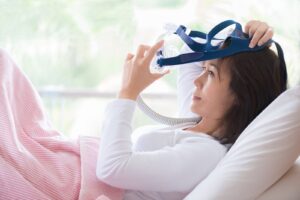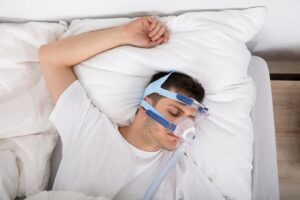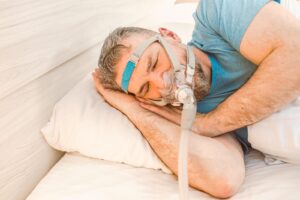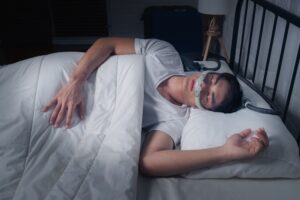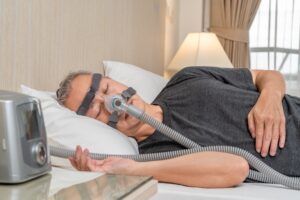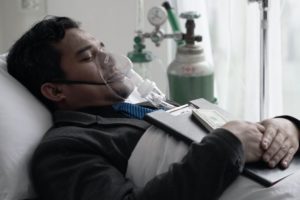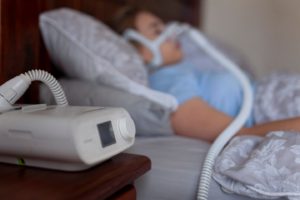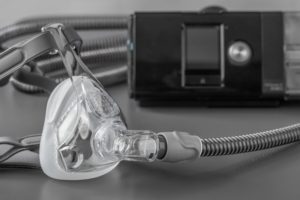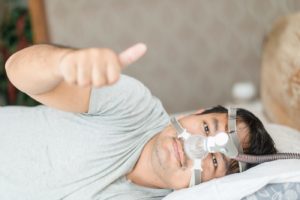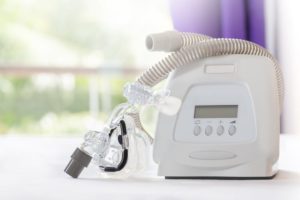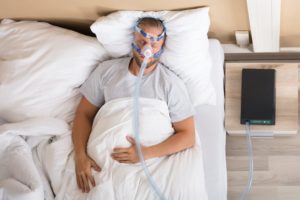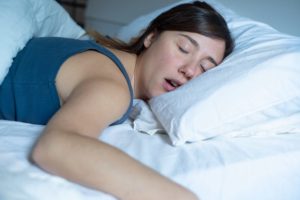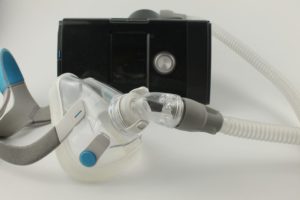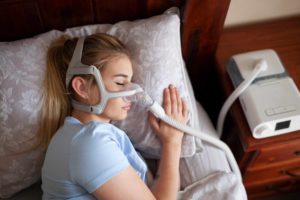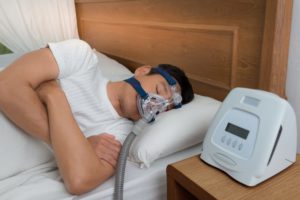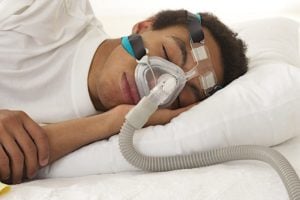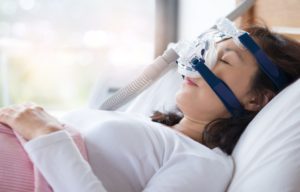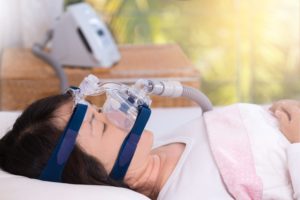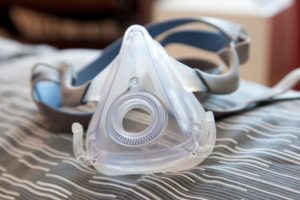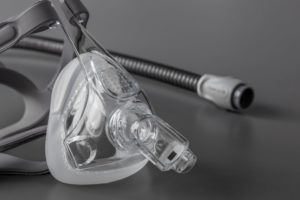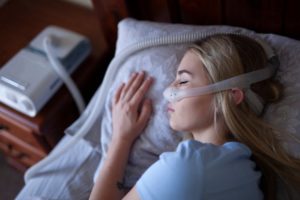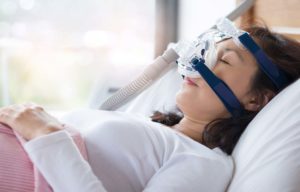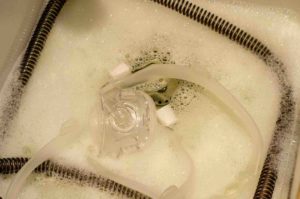What is CPAP Compliance?
People with obstructive sleep apnea (OSA) need to use their continuous positive airway pressure (CPAP) machine consistently to get the most out of treatment. CPAP compliance describes whether an individual is using their CPAP machine as often as prescribed. It is measured by monitoring the number of times and the total hours they use their CPAP machine.
Why CPAP Compliance is Important
Compliance is vital to obtaining the full benefits of CPAP therapy. Without sufficient treatment, disruptions in breathing from obstructive sleep apnea can lead to drops in your blood oxygen level and interruptions in sleep. Both factors cause uncomfortable symptoms and a wide range of long-term health risks.
Consistent use of a CPAP machine reduces the frequency of breathing disruptions and alleviates the symptoms of OSA. Studies show that good CPAP compliance improves a person’s quality of life and helps them:
- Sleep better
- Feel less tired and more awake during the day
- Function better at work
- Have lower blood pressure
CPAP compliance is generally defined as using a CPAP machine at least four hours a night during at least five nights in a week. Unfortunately, nearly half of people prescribed a CPAP machine use their device less than four hours each night. Even in those who previously had good CPAP compliance, symptoms of OSA can return after just one or two nights of insufficient use.
Suspect You May Have Sleep Apnea?
Answer three questions to understand if you should be concerned.
How CPAP Compliance is Determined
CPAP machines measure compliance by recording how often a person uses their machine. While CPAP machines usually monitor both how long the device is turned on and how long a person is wearing their CPAP mask, only time spent with the mask on is used to calculate CPAP compliance.
Information about CPAP compliance is stored on the CPAP machine and can be downloaded by a doctor or other healthcare provider. Doctors can use information stored on a CPAP machine to monitor compliance, assess the effectiveness of treatment, and determine whether any changes in treatment are needed.
Doctors commonly review this data during the first 30 days of CPAP therapy to determine if the device is being used consistently. After the first 30 days, doctors review CPAP data at least once every year or when there is a change in a person’s symptoms.
Health insurance companies often require that doctors monitor CPAP compliance. Information about compliance may be used to determine whether an individual’s insurance policy will cover CPAP therapy.
How to Improve CPAP Compliance
While four hours of use at least five nights a week meets the minimum standard for insurance, research suggests that nightly use and for longer periods of time are associated with increased benefits. For this reason, many new and long-term CPAP users seek out ways to continually improve their CPAP compliance:
- Start slowly: New CPAP users may find it helpful to use their CPAP machine only a few hours during the first night, then gradually increase the time they use the device over the next several days.
- Practice during the day: Wearing the CPAP mask for 15-30 minutes during the day allows for acclimation to the sensation of the mask when there is no pressure to sleep. Watching TV, using a computer, or reading can be helpful for distraction during these practice sessions. If the air pressure is not applied, the mask should be disconnected from the CPAP tubing.
- Talk to loved ones: It may help to ask bedpartners, roommates, and family members for support. Loved ones can also provide reminders to use the CPAP machine consistently every night.
- Schedule check-ins: Regular follow-ups with a doctor are an important way to monitor for challenges, side effects, or changes in CPAP compliance. Doctors can make sure that the CPAP mask fits well and recommend ways to make using a CPAP more comfortable.
- Seek out support: A doctor may also be able to recommend a health professional experienced with CPAP therapy or a support group for people adjusting to treatment.
Studies have shown that people who develop good CPAP compliance within the first few months are more likely to continue using their device long term, so it is important to address challenges early.
If poor compliance is due to discomfort or side effects, doctors can recommend a variety of strategies, including trying a new mask, adding heated humidification, and adjusting the machine’s ramp feature to gradually increase pressure as the user falls asleep.

Still have questions? Ask our community!
Join our Sleep Care Community — a trusted hub of product specialists, sleep health professionals, and people just like you. Whether you’re searching for the perfect mattress or need expert sleep advice, we’ve got you covered. Get personalized guidance from the experts who know sleep best.
References
5 Sources
-
Das, A. (13 July, 2023). Downloading data from positive airway pressure devices in adults. In N. Collop (Ed.). UptoDate.
https://www.uptodate.com/contents/downloading-data-from-positive-airway-pressure-devices-in-adults -
Wickramasinghe, H. (2020, September 15). Obstructive sleep apnea (OSA) treatment and management.
https://emedicine.medscape.com/article/295807-treatment -
A.D.A.M. Medical Encyclopedia. (2020, January 29). Positive airway pressure treatment. MedlinePlus.
https://medlineplus.gov/ency/article/001916.htm -
Weaver, T. E. (2021, September 28). Assessing and managing nonadherence with continuous positive airway pressure (CPAP) for adults with obstructive sleep apnea. In N. Collop (Ed.). UpToDate.
https://www.uptodate.com/contents/assessing-and-managing-nonadherence-with-continuous-positive-airway-pressure-cpap-for-adults-with-obstructive-sleep-apnea -
Rinaldo, V. (2022, March 2). Sleep-disordered breathing and CPAP treatment and management. In Z. Mosenifar (Ed.). Medscape.
https://emedicine.medscape.com/article/870192-treatment


